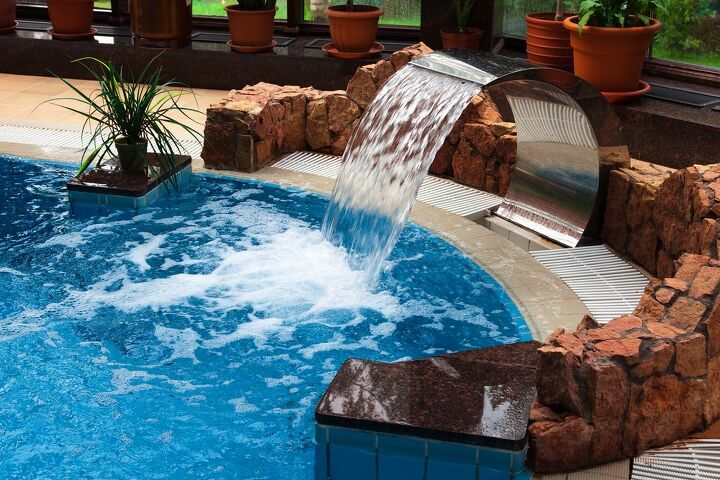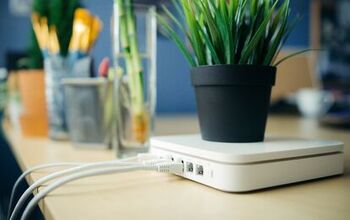Why Is My Pool Foaming? (Possible Causes & Treatments)

Pool ownership entails a significant amount of upkeep and effort. However, once you are into the full swing of things, you’ll develop a routine that ensures your pool is always clean and swimmable. Despite your regimen, you can sometimes get into difficulties, such as creating pool foam. But why is your pool foaming in the first place?
A chemical imbalance in your pool causes pool foam. It is also caused by organic material like skin cells and body oils accumulating within your pool’s water. To prevent pool foam, have all swimmers shower before use to rinse everything off. Also, ensure your chemicals are correctly balanced at all times.
While it’s not toxic, pool foam can be unsightly and gross when it’s sitting there in your pool water. This article will describe what pool foam is and tell you how you can prevent it.
Do You a Need Pool, Spa, or Hot Tub Contractor?
Get free, zero-commitment quotes from pro contractors near you.

Pool Foam: What Is It?
The foam indicates whether a pool is healthy. When you glance around your pool, you’ll immediately notice the difference between the foam and the bubbles since the pool foam just doesn’t seem right. It will have a thicker consistency and float atop the surface, whereas bubbles do not.
When the water in a pool is “thick,” foam forms on the surface, the thick consistency of the pool water can be caused by a variety of factors, some of which are human-made and others solely due to unbalanced chemicals.
Are Pool Foam And Air Bubbles The Same Thing?
When jets are operating, bubbles appear naturally and are forced to break through on the surface. So, how do you tell the difference between the bubbles and the foam? When the jets aren’t flowing, foam can emerge as patches or as a layer of thick material that floats on the surface.
Bubbles have low surface tension and are airy and lighter weight. Foam is a lot denser and takes longer to pop than bubbles since it is made up of various organic elements rather than air.
Where Does Pool Foam Come From?
Proper pool care necessitates maintaining the pool’s water balance. Unbalanced chemicals can cause algae and froth in a pool. Too many chemicals can also cause foaming in your pool that contains a good number of phosphates.
Pool foam isn’t necessarily toxic or hazardous. In truth, if your chemicals are correctly balanced, swimming in a pool with foam can be safe. However, we highly suggest removing the foam in your pool as quickly as possible to ensure that you have clean and clear water rather than “thick” water.
People Swimming In The Pool
Foam may be created by people who are in your pool. Pool foam can be caused by swimsuits that have leftover washing detergent. Foaming can also be caused by any material that can come from the human body, whether that’s sweat and oils or hair and skincare products.
Pool foam can be caused by a variety of factors, including:
- Products for skincare and haircare.
- Disinfectant for swimsuits
- Chemicals for swimming pools
- Saliva, urine, body fat, and sweat are examples of organic matter.
Rinse Off
Before swimming, it’s usually a good idea to rinse off any detergents, oils, shampoos, or cosmetics. Any of these impurities can react with your pool’s chemicals, resulting in foam.
This is one of the main reasons why so many public pools require that their swimmer’s shower before use so that they can remove the naturally occurring oils that our skin and hair produce. Chlorine is applied to the water to help maintain the pool’s cleanliness by battling bacteria and preventing anyone from getting sick who swims in it.
Chemicals That Were Just Added
Chemicals are necessary for proper pool upkeep, but they can be the cause of the foaming issue, particularly if you’ve just added chemicals to the water. Algaecide can cause the water to become frothy, depending on the chemical.
We recommend purchasing a high-quality algaecide that is free of copper and other unwanted metals. Metals in low-cost algaecides can generate pool foam. Also, always be cautious of the amount of algaecide you use.
Follow the dosage directions on the bottle carefully since too much of the algaecide might produce foaming. The water might get a little foamy because there are no algae for the algaecide to destroy when a pool is first opened at the beginning of the swimming season.
Pool Chemical Imbalance
If your pool is unbalanced, it might have a bit of foam. Remember to use a testing kit to test your pool water. You’ll want to pay special attention to the hardness of the calcium in the water.
The pool water will be soft if it has a low calcium hardness which means it has a higher chance of foaming. If your pool has a low calcium hardness, we propose that you add some calcium chloride to improve the levels in your water and prevent the foam.
Low calcium produces scaling on the metallic components of a pool or in plaster pools, in addition to foaming. The calcium hardness of your pool should sit somewhere between 100 and 400 ppm.
Proceed With Caution
However, you must exercise caution while attempting to increase the calcium hardness of your pool. If it rises too high, you’ll have to dilute the water in your pool, which can be time-consuming. Maintaining a healthy balance is crucial, so make sure you stick to the suggested doses.
If the chemicals in the pool water are out of balance and must be adjusted, we recommend monitoring total chlorine, the pH levels, and calcium hardness separately and correcting them. Then, to eliminate the foam, operate your pool pump for about 24 hours.
Foaming may occur when aeration equipment is used in pools treated with biguanide, but it should go away on its own with no further action on your part. As an alternative to either chlorine or bromine, biguanide is used to sterilize swimming pools. It performs admirably, although it necessitates more cleaning of the filters on a more frequent basis.
Treatment For Pool Foam
After trying all the preceding causes and procedures and your pool still has foam, there are a couple more tricks. We recommend that you follow the methods below to combat foam properly.
Step 1: Skim The Foam Out
Using a hand skimmer is the first step in removing pool foam. You can remove most of the foam this way, and it’s quicker. The rest should clear up soon with balanced pool water.
Algaecide can produce foaming, although there are algaecides that don’t foam that is on the market. Because of their metal presence, 10% copper and polymer-based algaecide should be avoided. They can create foaming and staining in your pool.
Step 2: Shock The Water
If the chemicals in your pool are in balance, then you can shock your pool’s water with chlorine and run the pump until it all subsides.
To sterilize a pool, shock it with chlorine. Contaminants, germs, and murky water are removed during this process. It also protects your pool from ammonia and live creatures such as algae.
Step 3: Apply Chemicals
The final stage in removing foam from your pool is to use chemicals that help with the foam situation. These chemicals are specifically intended to eliminate the foam from your pool without disturbing your pool’s other chemicals.
If you’ve tried everything and still have a foam problem in your pool, you may always hire a professional to check out the situation. They could always help choose a better solution for you and assist you in permanently removing the pool foam.
Do You a Need Pool, Spa, or Hot Tub Contractor?
Get free, zero-commitment quotes from pro contractors near you.

Preventative Measures
It’s usually easier to prevent than to try to correct something after it’s happened! Before swimming in your pool, we highly suggest that everyone take a quick shower to get rid of makeup, oils, lotions, and all of that.
Pool foam is unsightly and can be difficult to remove; however, getting rid of it is easy. Maintaining the chemical balance of your pool will ensure that you will never see or deal with that annoying foam again.

Heather is a passionate writer who loves anything DIY. Growing up, she learned everything from home repairs to design, and wants to share her tips with you. When she's not writing, she's usually hiking or searching for her next DIY project.
More by Heather Robbins



























